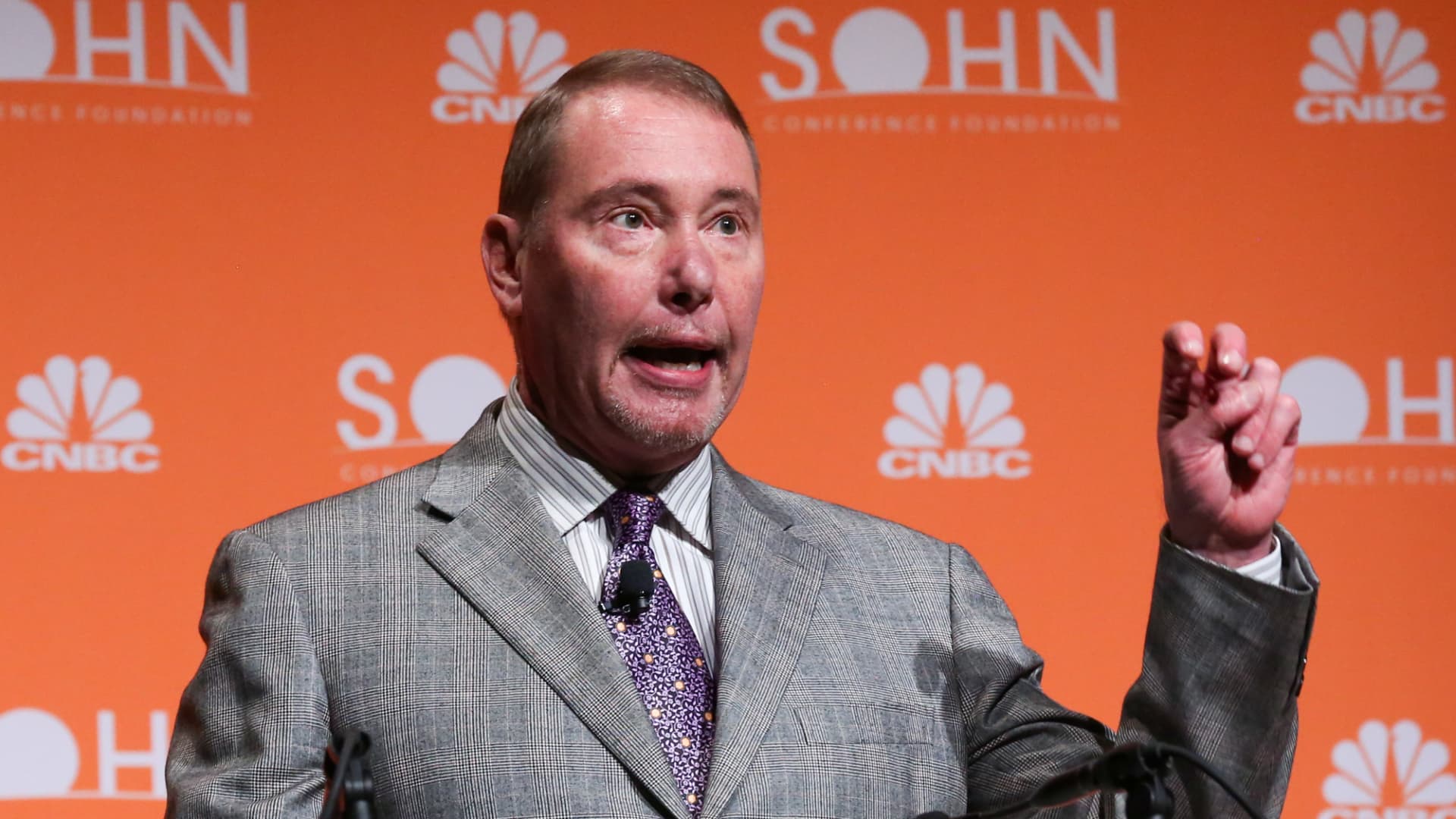
Canada Goose jackets for sale inside a Nordstrom store in Toronto, Ontario, Canada, on Tuesday, March 21, 2023. Nordstrom will close its six Canadian department store locations and seven Nordstrom Rack shops, as CEO Erik Nordstrom said the company no longer sees a realistic path to profitability in the country, The Canadian Press reports. Photographer: Cole Burston/Bloomberg via Getty Images
Cole Burston | Bloomberg | Getty Images
Shares of Canada Goose rose roughly 20% on Wednesday after the company reported fiscal fourth-quarter earnings that beat analysts’ estimates, though the company pulled its fiscal year 2026 outlook due to “macroeconomic uncertainty.”
The luxury retailer said it will not be providing a financial outlook for the fiscal year 2026 due to the uncertainty, citing “dynamic consumer spending patterns brought on by the unpredictable global trade environment.”
Nonetheless, Canada Goose said it “remains confident in the strength of the brand, the Company’s solid financial position, and its ability to adapt to changing conditions.”
Here’s what the company reported for the fiscal fourth quarter compared with what Wall Street was expecting, based on a survey of analysts by LSEG:
- Earnings per share: 33 Canadian cents adjusted vs 23 Canadian cents expected
- Revenue: CA$384.6 million (US$277.1 million), vs CA$356.4 million (US$256.8 million) expected
On a call with investors, Canada Goose Chief Operating Officer Beth Clymer said that 75% of Canada Goose’s units are made in Canada and “virtually all” are compliant with the United States-Mexico-Canada Agreement, meaning they are currently exempt from President Donald Trump’s tariffs. The remaining production, which primarily comes from Europe, is facing an increase in tariffs, but they will have “minimal financial impact,” she said.
CEO Dani Reiss echoed that sentiment, adding that the “vast majority” of the retailer’s products are not currently impacted by tariffs.
“This is not the first time Canada Goose has successfully navigated uncertainty. We’ve endured challenging times before, through 2008, through Covid, and each time we’ve emerged stronger,” Reiss said.
Chief Financial Officer Neil Bowden added that tariffs are not directly material to the fiscal year 2026 financial plans, but the “indirect effect of these actions on the global economy and changing landscape create greater uncertainty for us,” especially as the company is months away from its peak revenue periods.
Canada Goose’s revenue was up 7.4% from the same period last year.
Net income attributable to shareholders for the fiscal fourth quarter ending March 30 was CA$27.1 million, or 28 Canadian cents per diluted share, compared with a net income attributable to shareholders of CA$5 million, or 5 Canadian cents per diluted share in the prior year period.
As of Monday’s close, shares had fallen nearly 14% year to date, hitting an all-time low last month after Barclay’s analysts downgraded the stock and cut their price target.
The luxury sector as a whole has shown signs of weakness, with major luxury players like LVHM, Burberry and Gucci-owner Kering reporting a slowdown in sales in the quarter.
Canada Goose, known for its luxury parkas and puffer jackets that can retail for over $1,000, has tried to expand into the non-winter category by offering products like rain jackets and warm-weather clothing.
Its eyewear collection, introduced in the fourth quarter, was the company’s first online product launch, featuring artificial intelligence-powered virtual try-on tools. The retailer called the launch a “key milestone” in its “product category expansion journey” and part of a larger push to strengthen the brand’s year-round relevance.






